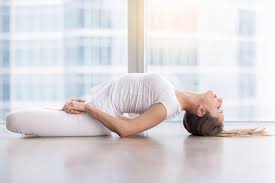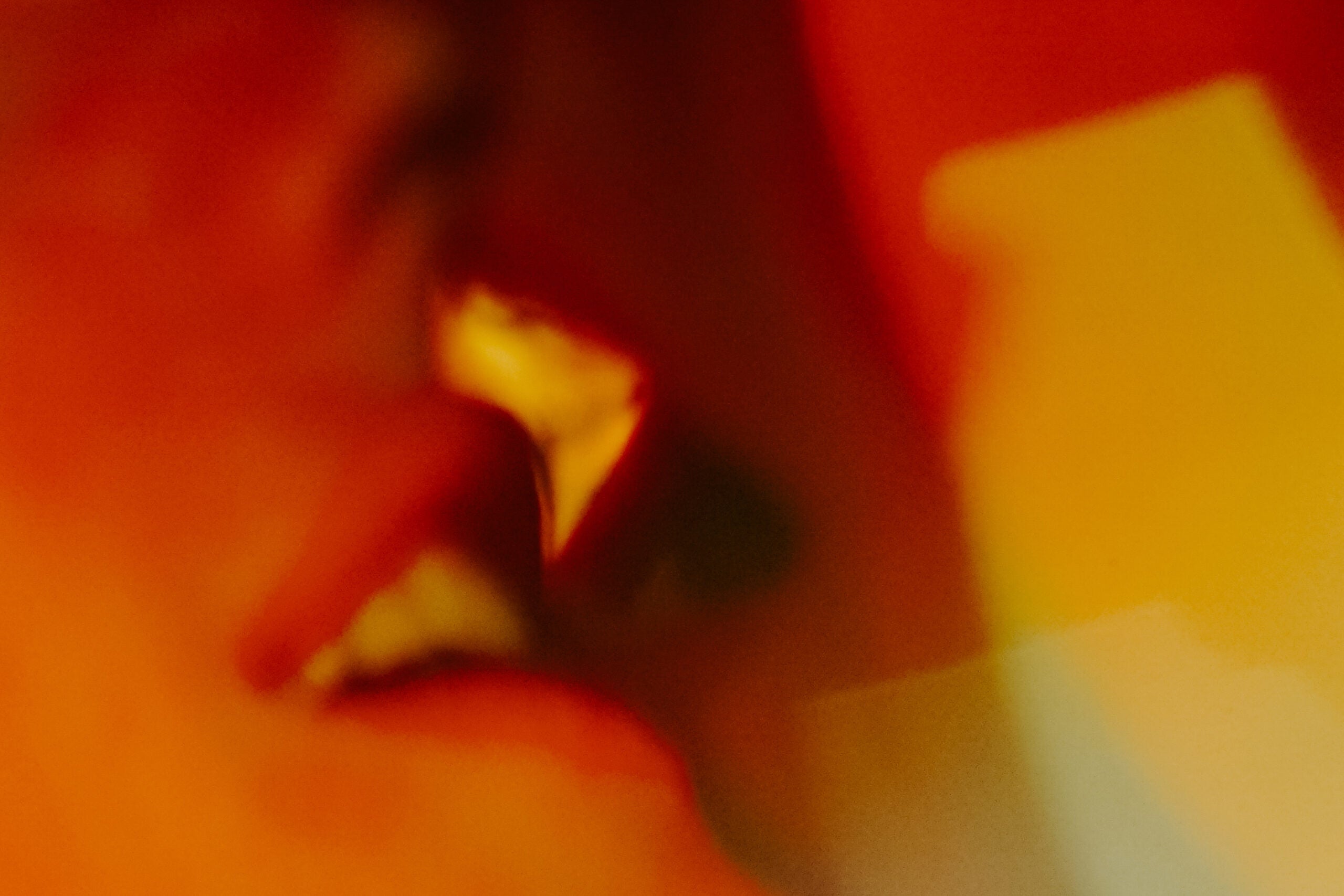Yoga philosophy helped me understand my anxiety. What I learned is that the only thing we can control is how we react to life’s events and thoughts. What I like about this perspective is it takes away any sense of powerlessness or feeling out of control over our emotions.
My 6:30 a.m. alarm went off from across the room. Actually, it wasn’t quite 6:30 a.m. yet. I had set my alarm clock 12 minutes ahead, as I always do, for 6:18 a.m. I looked at my iPhone to confirm. You know, just in case the space-time continuum got disrupted while I slept.
Before I got out of bed, I Google Mapped how long it would take from my apartment to the yoga studio, even though it was the exact same route I took four times a week to teach my classes. Even though it was a Saturday morning and there had never before been traffic in the six years that I had taught that class. Just in case.
I was rushing to get ready for class when my iPhone alarm went off at 6:30 a.m. The noise startled me. Then I sat quietly for a few moments, drinking my black tea (I can’t drink coffee because it makes me even more anxious) and working at my computer while repeatedly glancing at the clock and double-checking it against my iPhone.
A half-hour before class, I left the house after I double- and triple-checked all of my windows and locks. I also double-checked the contents of my bag to make sure I had everything, though when I arrived at my car, I still felt like I had forgotten something. (I hadn’t.)
A few minutes later at a red light, I sat in the car, panicked. I lived 15 minutes from the studio, but it seemed that this one red light could potentially make me late.
At 7:30 a.m., a full 15 minutes before class, I arrived at the studio. “What if there’s no parking? Please let there be parking,” I worried out loud, chewing my cuticles. There was always parking. In fact, most Saturdays, I parked in the exact same spot, but praying out loud couldn’t hurt, right?
My heart raced as I quickly walked—OK, half ran—past students taking their time and double-timed it up the stairs to the studio. I took a deep breath. I had made it.
I plastered a smile across my face, hoping it would hide the debilitating anxiety that had consumed my entire morning. I went to plug in my phone to play music for class and began furiously digging through my purse. “Oh, no, where’s my phone?!” I silently screamed. My heart dropped and it felt almost like I had fallen off a cliff. Then I patted my pants. Phew. It was in my back pocket.
Feel anxious reading this? Welcome to a day—no, a morning—in the life of someone living with anxiety.
Why it’s easy to let anxiety define us
I have experienced anxiety since early childhood, when I was diagnosed with Generalized Anxiety Disorder (GAD)—a diagnosis that has been confirmed by many doctors, again and again.
GAD is defined as excessive anxiety and worry without a specific cause. The best way I can describe it is, it’s like living with the constant feeling that I have forgotten something important or I am in trouble with someone.
These days, anxiety seems the norm for many of us, and distinguishing just how severe it is can be tricky for several reasons. First, anxiety is invisible. Although there are many peer-reviewed studies and evidence-based tools and treatments, you can’t take an image of someone’s anxiety as you would a physical abnormality. It’s entirely subjective.
Second, mental health can become deeply interwoven into a person’s identity.
And finally, the “enemy” that you are facing is your very own mind. Our limiting beliefs, our self-doubt, or even just having a negative outlook can be excruciating to experience, yet they originate within us.
What the Yoga Sutra teaches us about anxiety
For a long time, I thought my anxiety defined me. It was Patanjali’s Yoga Sutra, introduced to me through yoga, that helped me finally recognize that I am not my anxious.
The first time I read the Yoga Sutra, I was blown away by how many parallels there were to what I had been working on in therapists’ offices over the previous few decades. In addition to being an incredible mystic, scholar, and philosopher, Patanjali, it seems, was also a skilled psychologist.
Canadian author, scholar, researcher, and philosophy professor Dr. Sham Ranganathan agrees. Patanjali invented the idea of psychoanalysis,” says Ranganathan, who wrote a translation of the Yoga Sutra for Penguin Classics. Specifically, “the idea that present pathologies are a function of subconscious identification with past events.”
Jeanne Heileman has been teaching the sutra text in 200- and 300-hour yoga teacher training for more than 16 years. She recalls when she was a relatively new teacher and couldn’t afford therapy, she would randomly open up the book to find a sutra for guidance, and that the lesson she landed upon always provided relief. Heileman now attends therapy whenever she feels the need, while the sutras continue to be a source of everyday comfort.
Our “true self” and anxiety
The Yoga Sutra helped me understand that being anxious and having anxiety are two very different things. I have anxiety, but it does not define me. In yogic terms, by using the word “am” (as in, “I am anxious”), I was keeping myself locked in the limitations of my ego’s false self and hindering any path to relief. I am not my anxiety, because I am not my thoughts.
Simply changing my language to say and believe that I “have” anxiety acknowledges that this is just one of many aspects of my Prakriti or my expression of nature. My anxiety is a tiny thread of what makes up the entire tapestry of who I appear to be, but it is not who I am.
My anxiety is, in part, an expression of my false self, what we sometimes call the ego. When we talk about the “ego” in the terms of the Yoga Sutra, we mean it not in the sense of someone’s boastfulness, but simply the identifications we make around who we think we are (and what we tend to deem “good” and “bad”).
The Yoga Sutra also reminds us—I don’t like to say “teaches us” because we already inherently know these truths—that there is actually a part of us that is unchanging, perfect, and eternal.
This is our true Self. It is also known as Purusha. No matter how many labels you take on in this lifetime (i.e. I am a woman, I am a mom, I am a yoga teacher, I am a good person), beneath it all you are unchangeable and whole.
It is from this vantage that the Yoga Sutra sees a lot of our suffering as caused by our false self (ego). Dr. Ranganathan explains, “Mentality itself is constructed by egotism and egotism is the confusion of the self with [our] outlook.” In other words, in thinking we are our thoughts and defining ourselves by our labels, we not only limit our potential, but we can cause ourselves pain.
When we identify our truth—that we are not one thing—we are released from the bounds of those limitations. Being the skilled psychologist he was, Patanjali not only identifies the cause of suffering but as Dr. Ranganathan explains, he also provides a clear path for healing that constitutes “tracing these samsara’s (past events) to their origins and abandoning their construction.”
And we can do this, at least in part, through the non-physical teachings of yoga. I particularly find the Yama’s to be helpful. These constitute the first limb of Patanjali’s 8-Limb Path. (It is worth noting that only one limb pertains to asana, the actual physical practice of yoga.)
The games are often defined as ethical restraints. Though most of the yams begin with the letter “a,” which in Sanskrit means “non-,” Heileman interprets them to be so much more than simply a list of don’ts. From her vast studies of a wide range of translations, she observes, “the ‘a’ in front of the words un-does what the word does. It’s like a double negative makes a positive.”
For example, the first Yama is ahimsa or non-violence. Many interpret this to mean we should not be violent, but Heileman sees it less as moving away from violence and more moving toward kindness. Or the third Yama is Astea or non-stealing. Heileman says this is less about not taking what is ours and more moving toward generosity.
It was in applying the Yama’s to how I was viewing the world and treating myself that helped me find peace from my anxiety.
I still attend therapy regularly, and even take medication at times, yet the Yoga Sutra continues to help me find a type of peace and relief that I don’t always find on someone’s couch.
How the Yamas helped my anxiety
Anyone can practice the games. In Swami Satchidananda’s transliteration, Sutra 2.31 reads, “These great vows are universal and not limited by class, place, time, or circumstance.” Heileman interprets this to mean, “You don’t have to be spiritual, just be kind.” She adds, “These work for any perspective, and even for atheists and agnostics. They would fit in Emily Post’s book on humanity if one existed.”
Here are 5 ways the Yama’s have helped my anxiety:
Ahimsa (non-violence)
This first Yama seems obvious enough, though let’s not forgotten that it means kindness toward self as well as others. When it comes to anxiety, a lot of the thoughts we have can be fear-provoking. I have flashes of harm coming to my family. Or even the assumption that someone is mad at me because they didn’t reply to my text. They each feel painful.
In practice: While someone with anxiety might have a hard time controlling the initial thought (after all, anxiety is defined as unwanted or intrusive thoughts), we can work on controlling our responses to those thoughts out of a desire to not inflict undue worry on ourselves.
Rather than getting mad at my anxiety, which is harmful toward myself, I try to switch my thoughts. But first, I turn my inner dialogue to something kind, such as “It’s OK to feel anxious for a moment.”
Asteya (non-stealing)
We can easily comprehend stealing when it comes to taking that which is not ours, but there are other forms of stealing. Namely, from ourselves. Anxiety can be tremendously time-sucking. We spend an inordinate amount of time in our heads.
There is a Mark Twain quote, “I’ve had a lot of worries in my life, most of which never happened.” A recent study found that we have 6,200 thoughts a day. For people who have anxiety, a great number of those are anxious thoughts. The Yoga Sutra teaches us how to still them.
In practice: When I find myself going down a rabbit hole of anxiety, I ground myself in the present. I count the leaves on the trees. Feel the depth of my breath in my chest. Hear the sounds of the world around me. I give myself back the moment.
Satya (truthfulness)
As real as my anxieties may feel, they are often unwarranted. Like when I feared the worst about being late, even though I was way ahead of schedule. By confronting the truth of a situation, we take away the fear of the unknown. Often the actual unknown is not nearly as bad as we catastrophize in our thoughts.
In practice: When I have an anxious thought, I ask “What would happen if this came true?” As I come up with each possibility, I ask the question again. Many times, it is my fear of what could happen, and not the truth of what is happening, that makes my anxiety more painful.
The further I dissect my thoughts, the more I start to see that they are just that—thoughts. And even if, universe forbid, it does end up in that direction, we can then anchor into the truth and know that no matter what, we are so much more than just this phase.
Brahmacharya (non-excess)
Though original interpretations explain this Yama in terms of sexual abstinence, modern interpretations view it more broadly as managing your vital energy. Anxiety is exhausting. It not only has draining effects during the day but also at night when we can’t sleep.
In practice: I do not need to worsen my worry at night when I can’t sleep. Yoga Nidra or progressive relaxation can be grounding and a great thing for me to do when I’m up with insomnia.
“Yoga Indra and deep relaxation techniques help us to withdraw our awareness inward and away from external distractions where we lose vital energy,” explains Tracee Stanley, author of Radiant Rest: Yoga Nidra for Deep Relaxation & Awakened Clarity.
Stanley continues, “In that deep rest, we become more aligned with the part of us that is always at rest. We rest in the supreme and eternal part of us and can experience profound moments of stillness and peace that give us relief from anxiety.”
Aparigraha (non-greed)
For me personally, a great amount of my anxiety consists of fears around scarcity. I constantly worry that I am going to either lose something or that I will never have enough—whether it’s money, jobs, people, or health. The Yoga Sutra reminds me that I am not the owner of anything in this world.
In practice: When I find myself worrying about not having enough of something, I try to focus on everything that I do have. The people in my life, the fact that I have fresh water coming out my tap, and four walls surrounding me. And I am always grateful to remember that our true self is one of pure abundance and connection.
Conclusion:
What Yoga Philosophy Helped Me Understand About Anxiety
By understanding our anxieties, we can begin to release them. What I have learned is that what you resist will persist. If I do not accept my anxiety as it comes up, then the more power it has over me—the more time and energy I spend worrying about things that are outside of my control. By accepting these moments with compassion for myself, they lose some of their sting.
Yoga philosophy helped me understand my anxiety because instead of fighting against its existence or resisting how much space this emotion takes up in my life; yoga taught me to embrace the idea that there is no good or bad experience but only experiences that teach us lessons along our journey towards self-realization.”




